Chipotle's Nationwide Safety Trainings: An 'Air Ball'?
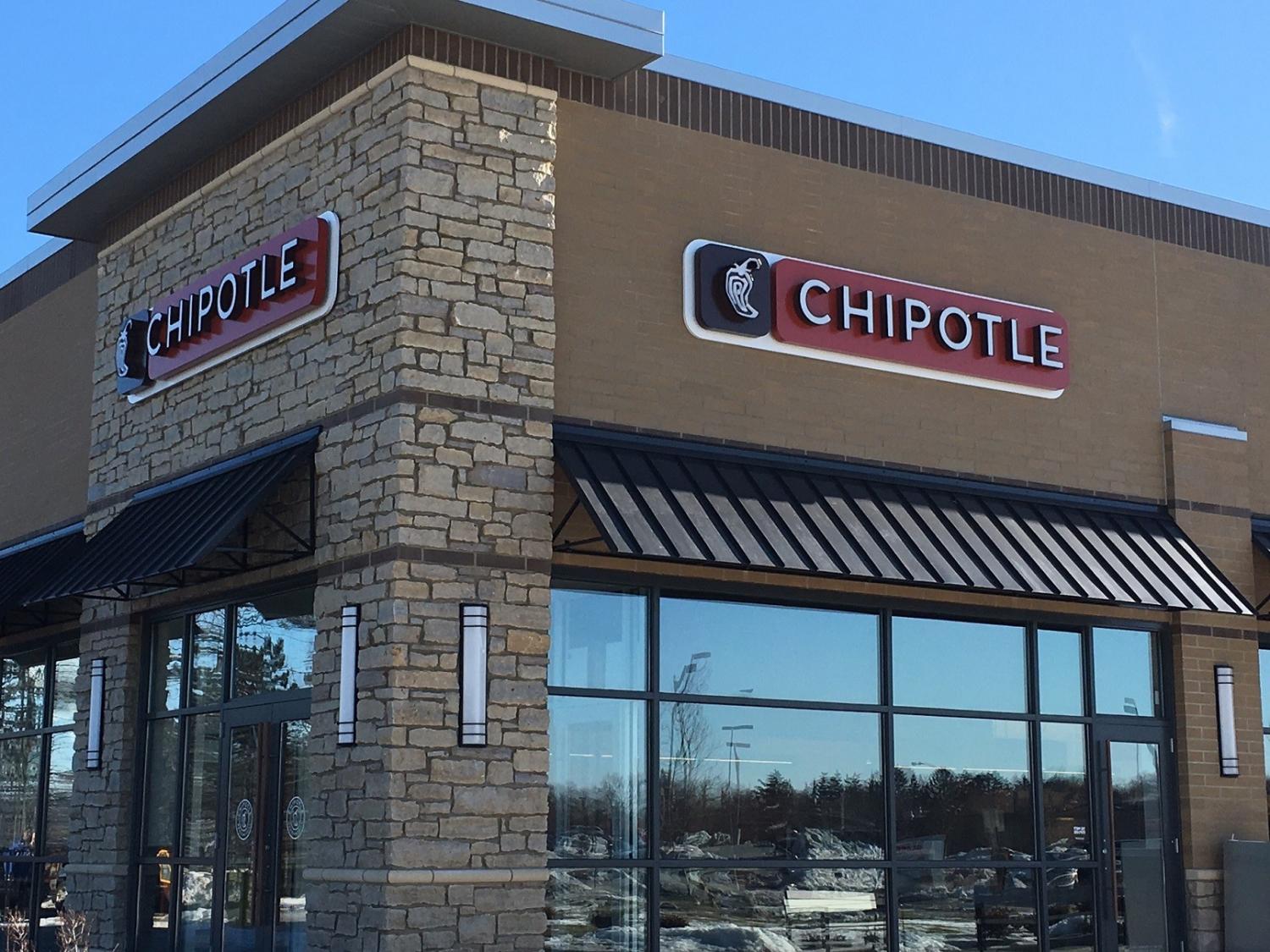

Chipotle founder and co-CEO Steve Ellis asserted in January that the company's nationwide, all-hands, employee meeting this past Monday to regain the public’s trust would be “a very public type of meeting.” The result was something far short of his proclamation.
Rather than enable -- dare I say invite – serious journalists and credible bloggers to cover the event, the few writers who found a way to gain access to one of the meetings shared predictable, if not underwhelming, steps the chain of burrito restaurants is deploying to win back investor confidence and the public’s trust.
The ‘bar’ the company needed to clear was lowered when the Centers for Disease Control and Prevention (CDC) on Feb. 1 said it concluded its investigation of E. coli, salmonella and norovirus outbreaks which closed 53 stores and sickened, according to Food Safety News, more than 600 customers in at least nine states during the last half of 2015. The CDC said the cause of the outbreaks, which drove Chipotle's sales down 30 percent in December and 36 percent in January, was a “common meal item or ingredient.” The norovirus outbreaks were attributed to sick employees coming to work.
For most customers and investors, the basic facts of the outbreaks may be all they need to jump back on the Chipotle gravy train. As for a restaurant chain priding itself on its safe and sustainable food practices “with integrity,” the company is not likely to earn high grades for transparency, especially as it continues to boast about it.
Even with the recent, relatively positive, turn-of-events, the Denver-based company still faces a heightening criminal probe and possible investor lawsuits over how it handled the outbreaks. As if that isn't enough, this week a judge ruled in favor of three female Chipotle employees from the Cincinnati area who sued the company for gender discrimination. Then, there is still the possibility, however remote, of proof surfacing of rumored terrorist-like actions against the affected restaurants.
Natural News, a popular website, this week reminded its readers that the ongoing probe leaves many unanswered questions. Might the company’s foes in the biotech industry be responsible for, or did they contribute to, the outbreaks? It’s still anybody’s guess.
When asked how a TriplePundit writer could listen or watch the meeting, which was to be beamed via satellite to theaters and other locations around the country, spokesman Chris Arnold said in an email that one reporter from the Associated Press would be permitted to attend a meeting at a location he did not disclose. The company closed all of its stores Monday through 3 p.m. local time.
The centerpiece of the presentation was a "new" safety program, which Chipotle made public on its website. Here are the details:
- Farms and central kitchens that raise and prepare ingredients are to deploy "high resolution testing." The company neglected to explain exactly how this works except to say it "involves taking a large number of samples from a relatively small amount of the ingredient." In January, the company told investors that a "kill step" to catch any pathogens that might have slipped through the revamped sourcing procedures via farms, ranches and other suppliers would also be deployed. But no details on that have been made available.
- Some ingredients will now be prepared in central kitchens.
- The senior manager on duty during each shift is designated “food safety owner,” responsible for making sure all procedures are followed.
- Stay home if they’re sick at least until five days after symptoms have ceased. Associated press reported that Chipotle grants employees three days of paid sick leave annually.
- Wash their hands at least at the top of each hour for at least 20 seconds and sanitize hands before putting on gloves to mix meats.
- Make all restrooms “super clean."
- Marinate steak and chicken after 8 p.m. once all other ingredients have been prepped and put away.
- Blanch lemons, onions, avocados and other produce to be chopped in the restaurants for five seconds to kill any germs.
Executives also announced the company is launching a $10 million “local grower initiative” to help small suppliers meet its updated food safety standards. One employee told Fast Company that it isn’t clear how the money is to be dispersed.
Ells acknowledged on the company's web site that "it may not be possible for anyone to completely eliminate all risk with regard to food (or from any environment where people congregate), but we are confident that we can achieve near zero risk."
How all of this affects Chipotle over the long haul remains to be seen. Many questions remain: Given the numerous suppliers and ingredients, not to mention its growing number of stores, why did it not it deploy these procedures a long time ago?
Part of its plan to regain the public's trust is a reported $50 million marketing campaign scheduled to launch next week. According to Food Safety News, it will not make any mention of its food safety challenges.
While there is no shortage of opinions on how the company has conducted itself, a few lessons are emerging for the food industry and public health officials.
Bill Marler, a personal-injury attorney in Seattle who writes frequently for Food Safety News, said: “My strong feeling is that [both Chipotle and public health officials] wish they had been more transparent and not covered-up information from the public that it clearly has a right to know. Failing to disclose undercut public health’s credibility and gave cover to Chipotle to continue to ignore its lack of interest if safer food.”
Jordan Pearson, a writer for Motherboard, an online magazine and video channel dedicated to the “intersection of technology, science and humans,” said a company presentation truly accessible by the public could have been a slam dunk. Rather it was “an air ball."
"Unfortunately, Chipotle’s bold plan to make its recovery public to all its customers was about as selectively transparent as its food sourcing procedures,” Pearson wrote.
Image credit: Jim Pierobon
Check Out This Home Battery You Can Install Yourself
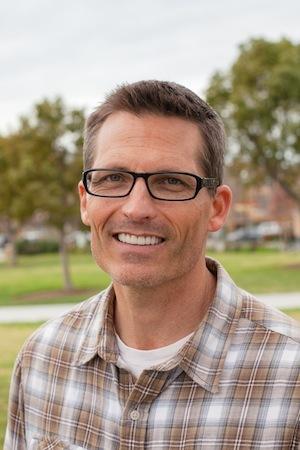

When Tesla's Powerwall home battery made its debut last spring, some headlines predicted it would “eliminate electricity bills,” while others took it a step further saying it would “change the world.” The promise of storing energy from residential solar panels onsite, rather than selling it to a utility company and buying it back, caught the attention of early solar adopters. Even those without solar panels took a liking to the system's ability to cut down on energy bills by storing utility-supplied power when rates are low for use during peak hours.
Tesla is still running a waiting list for the Powerwall, and even the first to reserve their systems will have to wait until later this year for installation. In the meantime, companies like Samsung are hopping in the race to develop a Powerwall killer. Now, there's another option on the horizon. And here's the kicker -- you can install it yourself.
Yep, the first true plug-and-play energy storage system is here, and it's available for pre-order on Kickstarter. Homeowners who snag the early-bird special can get one for as little as $1,200.
Dreamed up by San Diego-based energy storage startup Orison, the system can be installed in only a few seconds: Just plug it into an indoor outlet, and you're done (seriously). "The future of sustainable energy depends on mass adoption," the company wrote on its Kickstarter page. "And the mass adoption of any technology begins with ease of use." The company expects to deliver the first units this summer.
The fact that the first plug-and-play storage system to hit the market will likely come from a small startup, rather than a tech giant, makes the whole thing pretty impressive. But we couldn't help but wonder if it's too good to be true, especially given the string of very public crowdfunding scams to hit our newsfeeds over the years. So, we spoke with Eric Clifton, CEO and co-founder of Orison, to get the low-down on the product.
Small system, big idea
Clifton, a former member of the national board of directors for the U.S. Green Building Council, has been working in the smart-home technology space for nearly 15 years. His focus for the better part of a decade has centered around ways to reduce peak-demand by connecting utilities directly to home-automation and building-management products.
"One of the things I learned in the space is that most of the utility demand-response programs have to deal with taking something away from the customer, whether that's time or temperature, in order for the grid to thrive," Clifton told 3p in an exclusive interview. "So, that was the sort of thinking that I was trying to prevent: How do we give the customer everything they want but still reduce that demand and manage the grid?"
Clifton and his business partners, robotics expert and entrepreneur John Kohut and JPL alum Greg Smedley, tested and perfected their inaugural energy-storage product over three years before unveiling it on Kickstarter. The trio's startup, Orison, is in the midst of raising its Series A funding. Its founders hope the visibility the crowdfunding platform affords will show investors that customers are willing and ready to pay for the product, Clifton said.
"We wanted to show potential investors the desire by the community for this type of product. Fortunately groups like Tesla, when they announced what they were doing, brought a lot of interest to the space. So, that helped us and any other energy storage company get some visibility."
Some Kickstarter users were quick to express skepticism about the viability of the technology in the comments section, some questioning whether a plug-and-play solution will comply with U.S. electric codes and others wondering if such a technology is even possible. Clifton, who is actively replying to user questions in the comments, said engaging a lively discussion is part of the reason he chose Kickstarter in the first place.
"That's one of the best parts," he told 3p. "We get input from all different walks of life and all different spaces. The nice thing about it is it allows us to continue to fine-tune and hone, and maybe pick up some things that we could have missed along the way."
Clifton told us industry feedback has been positive so far and said Orison is also in talks with utility companies about offering the system as part of their services. Clifton said the company isn't ready to disclose the locations of these utilities, only that "they're not all in the U.S."
A look at the system
The Orison battery is available in two variations -- a tower and a panel -- building on the tech trend of style-first (think: the Nest's uncanny ability to make thermostats cool). Weighing in at 38 pounds, Orison's battery tower looks like a cross between a cylinder fan and a Wi-Fi router. The 34-inch tower, which also functions as an LED light and bluetooth speaker, is designed to be placed on the floor (prominently, of course). The 40-pound panel, which also functions as an LED light, can be mounted on the wall and comes in a variety of colors to suit the owner's decor (see above).
The systems are insanely small compared to the Powerwall, which weighs more than 200 pounds -- and Clifton told us a small size was his cohort's primary goal, ranking even above storage capacity.
"The size was dictated by weight, and we didn't know where we were going to end up with the total capacity," he told 3p. "We just knew we needed to stay under 40 pounds for what we believed the market segment is looking for. So, we were actually a little bit surprised. We were thinking it would originally be maybe 1 kWh to 1.5 kWh."
Both units store 2.2 kilowatt-hours of energy: less than it takes to do a load of laundry but enough to keep the lights on for 10 or more hours during an outage.
Fortunately, like the Powerwall, the Orison system is modular -- meaning users can spend up to add more storage capacity. As many as five so-called 'Panel+' units can be added to a main Panel for up to 13.2 kWh of storage on a single circuit, compared to 10 kWh for the largest home Powerwall.
The Orison system's coveted 40-pound size is a significant drop from the startup's earlier prototype, which weighed in at 140 pounds. Employing new power electronics -- namely an ultra-thin inverter -- allowed the Orison team to achieve the 100-pound drop, Clifton said.
"We've been able to actually take those power electronics and condense them down into a package that's about an inch thick, 6.5 inches wide and 9 inches tall," he explained. "It's very, very small. It weighs 2.5 pounds. So, that's really the crux to where we have the ability to be smaller than everybody else."
So, is it worth it?
The Orison Panel will retail at $1,600, with each supplemental unit costing $1,100. Taking into account the plug-and-play factor, which eliminates the need for costly professional installation, that's a pretty attractive deal -- and homeowners are clearly taking notice: The company's Kickstarter campaign blew past its initial $50,000 goal in the first 24 hours. It was featured as Kickstarter's project of the day on Wednesday and now has more than $215,000 in backing.While lingering hurdles remain -- namely ensuring compliance with national electric codes -- Clifton told us he's confident in his team. "The hope is that we can do everything that we say that we can do, and we believe we can."
The Orison team plans to obtain UL certification for its flagship product before delivering to customers. Clifton said it's not possible to obtain this certification for a non-compliant product, so those worried that they may be shipped an illegal item can rest easy. In the event that Orison can't deliver on its promises, it will refund Kickstarter backers' money, Clifton said.
"I'd want nothing less," he told 3p. "The whole point of this exercise is to get people involved in a concept which is very different than what else is out there in the world, so people really start pushing toward it. Otherwise we're not going to make any progress in innovation."
The startup's ultimate aim is to spur renewable energy adoption, with homeowners choosing the use the batteries in tandem with residential solar. Since solar and wind power are variable by nature, reliable and efficient energy storage has long been considered the key to widespread renewable energy adoption. And, after quadrupling its initial funding goal with 29 days to go, the Orison Kickstarter campaign is poised to prove that homeowners are indeed interested in generating and storing their own power.
So, what do you think? Would pre-order one of these systems? Tell us about it in the comments section and on social media.
Images courtesy of Orison via Kickstarter
The Missing Voice for SCOTUS on Climate: Students
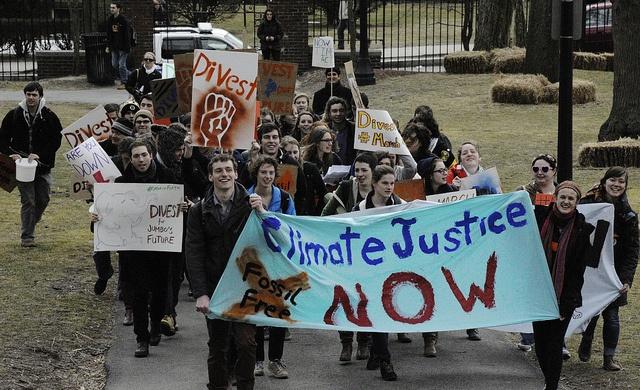

By Eban Goodstein
On Tuesday, in a surprise move, the U.S. Supreme Court delayed federal climate action for a year, and, perhaps, signaled intent to block power plant regulation altogether.
The backstory is this: Last December in Paris, the U.S. pledged to cut global warming pollution by 30 percent below 2005 levels by 2030. Along with new commitments from China and other major polluters, the Paris accord is a major step forward. Projected global warming this century has been cut from an unimaginable 8 degrees Fahrenheit, to a cooler -- but still way too hot -- 6 degrees.
Underlying the U.S. commitment is the 45-year-old Clean Air Act. This national law was given new legs in 2007 when the Supreme Court decided that, under Clean Air legislation, the EPA had both the authority and the responsibility to force industry to cut global warming pollution.
Eight years later, last August, the EPA finally issued regulations designed to reduce emissions from the power sector. The agency’s Clean Power Plan set a 2030 target for pollution reduction in every state. In Ohio, the goal is 37 percent, in Florida 26 percent, and in Arizona, 34 percent. So, until yesterday, in each state capitol a person at DEQ (or DEP or DEC) was charged to come up with a plan to meet the target.
Now, they are shutting down their spreadsheets. In an extraordinary move, the Supreme Court granted a stay that puts a halt to Clean Power Plan implementation until legal challenges to particular features of the plan are heard and settled, probably by SCOTUS itself later this year. The U.S. commitment made in Paris is now off the rails — at least temporarily. Some are interpreting the stay as a signal that the Court will force the EPA back to the drawing board on global warming pollution, a move that would fundamentally undermine the U.S. climate leadership that was so critical to the deal in Paris.
The Court heard from lawyers representing the perspectives of red states and blue states, coal and utility industry lobbyists, and Obama’s EPA. But there was one key stakeholder from whom the court did not hear, a group that did not get to present oral arguments: the young people who will actually be around in 2050 to experience the impacts of our action, or inaction, today.
Can students gain a voice to change their climate future? A key opportunity is the Power Dialog. The week of April 4, in more than 30 state capitols across the country, thousands of college and high-school students will meet in face-to-face dialogue with the officials who are in charge of planning pollution cuts in their states. Students will have a chance to learn about what their states are proposing — including the now-stalled Clean Power Plan -- and to pose questions like:
- What is the state target for renewable energy, and is it strong enough?
- Will communities of color benefit from this policy, or will they be exposed to even more pollution?
- Is our state going to gain jobs from solar, wind and energy efficiency?
- Are we going to be “trade-ready”?
- Would a price on carbon help meet the state goal?
The Power Dialog, sponsored by the Center for Environmental Policy at Bard College, is not a lobbying or advocacy event. Instead, it is a unique educational opportunity for young people to experience first hand the process of climate policy formation, ask questions, and see how states can move forward at low cost to meet the Paris targets.
Five years from now, in 2020, the nations of the world are scheduled meet again to ratchet-up their pollution reduction goals, to try and hold the warming to a total of 3 or 4 degrees Fahrenheit. After yesterday’s decision, it is not clear that the U.S. will follow through on our existing commitments. And if we do not, then the Chinese will have no incentive to meet theirs. This is the moment that will determine if the Paris agreement was indeed historic, or if it will be only a forgotten stop on the road to a runaway global-warming future.
The Power Dialog is the best and biggest opportunity for young people to have a voice in the new rules being debated for climate protection. Learn how to get involved here.
Image credit: Flickr/James Ennis
Eban Goodstein is an economist and is Director of the MBA in Sustainability and the Center for Environmental Policy at Bard College in Annandale-on-Hudson, NY.
H&M Conscious Foundation Offers $1.1M Bounty in Quest to Close the Fashion Loop


Last night in Stockholm, the H&M Conscious Foundation announced the winners in the Global Change Award. The challenge seeks innovative solutions to bring the circular economy to fashion and pays out a total of 1 million euros (about US$1.1 million).
Launched in August and closed in October, the competition received applications from more than 2,700 innovators from 112 countries each seeking a piece of the million-dollar pie. An expert jury selected the top five ideas before voting opened to the public to determine how the funding would be awarded.
The winners were announced and the awards presented by HRH Crown Princess Victoria of Sweden, and TriplePundit was on hand to catch the action. (I wore my favorite ethically-made jewelry from Songa Designs):
The winners are:
Finland: Making waste-cotton new
This technology dissolves textile waste, allowing waste-cotton to be used as a raw material in the production of new technologies. The project build's on Finland's heritage in the paper and pulp industry. The winners take home 300,000 euros or around US$340,000.
Team spokesperson Michael Hummel explained the motivation for the project to TriplePundit: "Demand for man-made fibers like polyester is expanding because the cotton market is stagnate. Demand is growing for cotton, but there is only so much available." This project will increase the volume of available cotton without all the troublesome issues associated with growing it.
United States: The polyester digester
This team out of the University of California at Davis developed a microbe to break down waste-polyester and turn it into a usable material again. Their innovation has already caught the attention of leading venture capital firm Y Combinator, so they are well on their way to making a splash in the startup world as well as among apparel designers and manufacturers.
The grant of around $280,000 will help them continue development until they can run a pilot project to prove their technology works at scale.
Estonia: Online marketplace for textile leftovers
Ten to 15 percent of the materials used in textile production are spilled or wasted. This technology will allow garment manufacturers to monitor waste so that they can reduce it, improving their efficiency and financial returns at the same time.
This team taps into Estonia's reputation as an IT hub to build a product that can work for manufacturers around the world. Their prize is 150,000 euros.
Italy: 100 percent citrus
This group takes waste from the citrus industry -- peels and pith -- and turns it into a high-quality silk-like fabric. They currently make samples and small volumes but plan to use the 150,000 euros in funding to go full-time and scale, ultimately selling their fabric to apparel manufacturers. This team is taking advantage of their proximity to fashion capital Milan to work directly with designers, but they also hope to scale their product.
Netherlands: Growing textile fiber under water
Algae grows in oceans, streams, lakes and waterways and has few productive uses. This team has turned the storm drain into a usable textile. Founder Tjeerd Veenhoven created this solution by looking for waste products in nature with a goal of turning them into usable items. With the grant from the H&M Conscious Foundation he hopes to bring the idea to scale making a durable, soft yarn.
The takeaway
What all of these technologies have in common is a bird's-eye view of the fashion industry and a desire to make big strides in improving its efficiencies, reducing waste and turning a linear supply chain into a circular economy.
While each group is in a preliminary stage, a financial boost and the global attention that comes with the support of the H&M Conscious Foundation put them well on their way to reaching their goals.
While this competition comes from H&M's Foundation, the apparel company is also hard at work on innovations to reduce waste. Perhaps these winners will one day become suppliers -- truly creating a closed-loop, circular economy.
Travel and expenses were covered by H&M; opinions are my own
Images credit the author
Community Solutions: Revitalizing Neighborhoods Through Skilled Volunteering
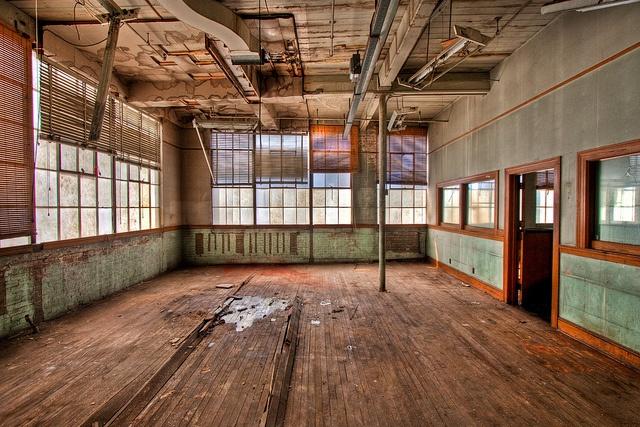

Multi-generational poverty is a chronic problem in many U.S. cities these days. Studies show that children who are born into poverty due to unemployment, low wages, illness or other factors are often likely to repeat that cycle throughout their lives.
It's not as if these people fail to recognize the credos that fostered the American work ethic: effort, elbow grease and ingenuity, researchers say. But they lack opportunity: The social and economic networks within their reach are limited and don't always allow for success.
Few American communities better reflect this truism than Northeast Hartford, Connecticut, a section of town once bolstered by a thriving gold leaf factory. But when the factory closed in 2004, the opportunities for generations of workers in one of the state's lowest-income areas were hit hard. Health statistics reflected this plummet as well: By 2012, Connecticut's Health Index found that residents in Northeast Hartford topped the list when it came to health risks.
The nonprofit organization Community Solutions is working to change those statistics through a number of community-based initiatives that help solidify resources and empower residents.
Community Solutions' first task was to rehabilitate the old factory, which was donated by the former owners, and establish it as a community base. Then the organization set its sights on revitalizing other resources in the community, harnessing the knowledge and skills of local residents who would benefit from the improvements.
Gina Federico-Muslim, who manages Community Solutions' Hartford properties, said improving access to local parks and recreational facilities was one of several "low-footprint" projects that not only engaged local partners, but also helped improve living conditions and healthy opportunities for residents. "These endeavors, along with the community healthcare worker pilot, are part of a collaborative plan to positively impact health outcomes, increase community resiliency and spark an economic turnaround in the area," Federico-Muslim told 3p, who said it was the collaborative community effort that helped to make this endeavor a success.
"Our team at Community Solutions has convened a broad coalition of partners to tackle some of the hardest issues around health, healthcare delivery and the financing of that delivery in neighborhoods of high poverty like Northeast Hartford. In the course of that work, we have been grateful to form a partnership with the Boehringer Ingelheim Cares Foundation that breaks the mold of the traditional funder-fundee relationship. Boehringer Ingelheim’s skills-based volunteering approach has allowed us to build a true collaboration that harnesses the experience and expertise of Boehringer Ingelheim employees in the service of community goals."
Community Solutions focuses healthcare in Northeast Hartford, one of three communities that make up North Hartford, a federally-designated promise zone. The group has been instrumental in improving healthcare access for many of Northeast Hartford's residents. Promise zones are, by allocation, areas that, due to higher than normal risk factors, can receive increased partnership between the federal government and other stakeholders.
"Compared to the larger Hartford region, the area’s population faces elevated rates of diabetes, obesity and heart disease as well as the most diminished life expectancy in the state of Connecticut," Federico-Muslim said. "Inspired by the early successes of a small program we ran in 2013, we are currently leading partners in the launch of a community healthcare worker pilot program designed to better coordinate care and raise quality of life for 500 medically vulnerable North Hartford residents."
And that is where community partnership and expertise comes in. "Skills-based volunteers have helped us research, design and implement this project. And, over the next two years of implementation, we expect to see three key outcomes as a result of the pilot," she said.
First, the organization will look for an improvement in healthcare experience, with more in-home care provided by community healthcare workers (CHWs) who are trained for the particular socioeconomic challenges being faced by patients. Second, the organization has its eye on ratcheting-up the overall health of the community, so that patients influenced by factors like housing and economic challenges can succeed in sticking to their healthcare regimens and, gradually, improving their quality of life.
"Lastly," said Federico-Muslim, "we expect to see a reduction in larger system costs. Our target population is largely covered by Medicare and Medicaid. Many are high utilizers of the local emergency department and/or are dealing with chronic medical conditions. Well-managed primary and preventive care is far cheaper than caring for people in the hospital."
"No one group can solve these challenges alone," she said. Volunteers are paired based on their expertise and come from a variety of public and nonprofit sectors. "We look for thought and implementation partners who are familiar with local neighborhoods, as well as local policy and the healthcare space."
And that's the value of skilled volunteers. "They bring highly seasoned insight that improves our ability to navigate a very complex landscape. With their help, we have been able to move our projects forward in significant ways."
The structure benefits the volunteers as well, many of whom care deeply about their neighborhoods and are driven by a desire to see socioeconomic changes. Through volunteering their expertise, they gain valuable work experience as well. "Many walk away with new, hands-on knowledge as well as new and meaningful relationships" that can help them in future jobs, Federico-Muslim explained.
"Community Solutions works toward a future without homelessness in which poverty never follows families beyond a single generation." It's a tall goal, given today's statistics. But projects like the one in Northeast Hartford are proving, with the help of volunteers, that public-private partnerships do work in turning around multi-generational poverty.
Through its skills-based partnership, Federico-Muslim said: "[Our] collaborative process results in more effective local services, more connected and resilient communities, reduced taxpayer costs, and better lives for struggling people."
Image credit: Flicrk/Jonathan Haeber
Cities Offer Work -- Not Pennies -- to Panhandlers
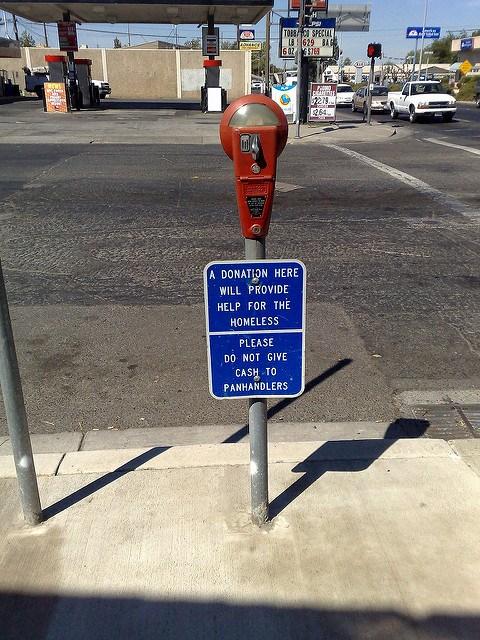

Many cities ban panhandlers from their streets. Others try to regulate within stiff boundaries that threaten heavy fines or jail time for violations.
Bans on panhandling saw a 25 percent spike between 2011 and 2014, according to a report published by the National Law Center on Homelessness and Poverty. The number of laws that restrict panhandling increased by 20 percent during that time.
It's illegal to panhandle on any street in cities like Lincoln, Nebraska; Newark, New Jersey; and Santa Barbara, California. The scenic city of St. Augustine, Florida, meanwhile, imposes such specific geographic limitations on panhandling as to make it almost impossible to memorize the locations in which petitioning for food or money is legal.
But those more aggressive tactics are receiving some pushback these days from advocacy organizations. They argue that it isn't the concept of being asked for assistance that is objectionable to many, but the evidence of poverty and social need.
That's forced some rethinking about ways to reduce the number of panhandlers on streets as homelessness and poverty continue to rise in some areas of the country.
One city that has come up with a kinder approach these days is Paterson, New Jersey. With a population of 146,000 and an unemployment rate that topped 17 percent in recent years, the city is seeking ways to reduce the number of people living and panhandling on its streets.
Its answer doesn't necessarily give panhandlers a free pass -- those picked up for begging are still subject to prosecution -- but they are put in contact with services that may help them address their particular needs. After being fingerprinted, they meet with a social worker, doctor or other aid worker to determine what provisions may be needed, such as food, clothing or access to jobs.
The program is still in its infancy, but since January 2013, the city has seen unemployment drop by more than 9 percentage points, compared to 4.8 points for New Jersey as a whole -- evidence that Paterson's endemic poverty levels may be gradually dropping as well.
But it is Albuquerque, New Mexico's approach that has garnered the most attention recently. The city has its own bylaws to limit what calls "aggressive panhandling" (and at one time enforced even stricter laws to rule out begging on its streets entirely). But it's also made an effort to find more humane ways to improve opportunities for those in need of money and food.
A couple of times a week, a city-funded van rolls through the downtown area offering work to those who need it. At $9 an hour, the work, which usually includes helping out on the city's beautification projects, pays just above minimum wage. It also gives unemployed laborers work, meals, experience and the extra bonus of a moral boost. The program, which started last summer, employs about 10 people per shift.
"You can't legislate people off the corner," says Father Rusty Smith, who runs Albuquerque's St. Martin's Hospitality Center. Father Rusty was one of the instigators of the new program, which is funded through a United Way campaign. Residents can donate to the fund on a website that also serves to connect unemployed individuals with work.
"We wanted to try and create an initiative that would be a little out of the box," explains Albuquerque Mayor Richard Berry, also an outspoken advocate of improving the city's housing options for low-income residents. "Instead of taking the punitive approach and the regulatory approach, why not try something that uplifts everybody?"
Images: 1) Morgan; 2) Mark Hillary
U.S. Supreme Court Halts Clean Power Plan Amid Questions of Partisanship
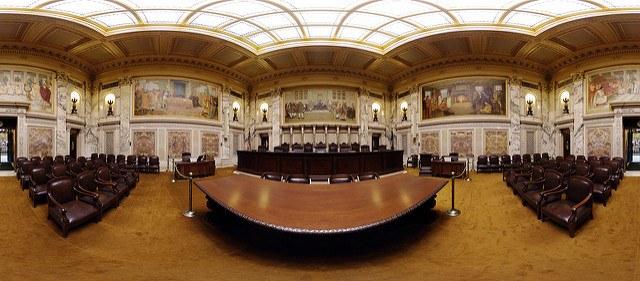

The Obama administration's Clean Power Plan suffered a setback on Tuesday when the Supreme Court granted a stay to the program. In a 5-4 decision, the court sided in favor of petitioning states, utilities and coal companies that claimed that the federal government was overreaching its powers when it attempted to establish a national plan to move away from fossil-fuel based power. Requests for the Supreme Court to impose the stay were submitted in January after an appeals court ruled that the plan could proceed while legal challenges were being heard.
The Supreme Court's ruling is an about-face to the U.S. Court of Appeals for the District of Columbia Circuit, and it comes at a critical time for the Obama administration's clean energy program, especially in light of the upcoming elections in November. While the administration can appeal the Supreme Court's order, arguments would not be considered until June and, pending acceptance by the higher court, likely wouldn't be scheduled until October or later this year. That leaves the fate of the Clean Power Plan in the hands of the upcoming presidency.
The Obama administration released a statement that while it disagrees with the Supreme Court's ruling, it would continue to work with states that are willing to support the program. It accused states and opponents of trying to wrangle an "extraordinary and unprecedented" halt to the plan before it was fully reviewed in court.
Supporters of the Clean Power Plan have been even more vocal, questioning the motives of the Supreme Court's conservative majority to block a key strategy to combating climate change. In a Huffington Post op-ed on Wednesday morning, attorney David Halperin delved into why proponents of the plan find the court's decision disturbing.
"Not satisfied with that expedited schedule, the five Justices reached down and took sides in a regulatory dispute that a lower court was still considering. That just hasn't happened before," wrote Halperin, a contributor to RepublicReport.org, who is well-known for his work with the Center for American Progress and is a founding executive director of the American Constitution Society. "Had the Supreme Court not acted, each state would have been required to provide the [Environmental Protection Agency] by Sept. 6 a plan to comply with the regulations, or to request a two-year extension."
Dozens of environmental organizations that support the EPA-regulated plan also weighed in to give their support for its continuance.
The League of Conservation Voters issued a statement saying that while "we strongly disagree with this temporary pause, we are confident that the courts will ultimately uphold the Clean Power Plan on its merits. These standards have a firm legal basis in the Clean Air Act, and have been embraced by a broad and diverse set of stakeholders."
“Today’s court decision is unfortunate but does not reflect a decision on the merits,” added the Environmental Defense Fund's general counsel Vickie Patton.
The U.S. Conference of Mayors also provided analysis of the Supreme Court's unconventional ruling, which CEO and Executive Director Tom Cochran noted flies in the face of efforts that are already being undertaken in municipalities across the nation:
“The U.S. Conference of Mayors is disappointed with the Supreme Court's decision to stay the implementation of EPA's Clean Power Plan. This is a surprising ruling given the fact that the court earlier ruled that greenhouse gas emissions are considered an air pollutant and therefore subject to regulation under the Clean Air Act."More importantly, this is disappointing to the thousands of cities that are already doing their part to reduce greenhouse gas emissions and were looking to the utilities to become partners in the fight to reduce greenhouse gas emissions."
And finally, the Union of Concerned Scientists offers its own ray of sunshine on the matter, with a caution to go slowly when interpreting the outcome of a temporary stay: "The Supreme Court’s decision to hold up the administration’s efforts to cut carbon emissions from coal-fired power plants is a speed bump, not a stop sign, for progress. It is not a ruling on the merits, and it would be a mistake to read too much into a one–paragraph decision."
For the litigants, however, which includes the state of West Virginia whose attorney general spearheaded the effort, the impromptu stay was a victory that would ultimately translate to financial savings for the state, workers and utility companies.
“We are thrilled that the Supreme Court realized the rule’s immediate impact and froze its implementation, protecting workers and saving countless dollars as our fight against its legality continues," said West Virginia Attorney General Patrick Morrisey.
Whether those savings are realistic in the face of a shifting climate is, of course, what is at the heart of this debate. With the decline in oil and gas revenues and the increasing evidence that climate and human business decisions are linked, energy strategies such as those put forth by the Obama administration may find an ear in the courts once more.
Anyone who is still unsure about the impacts of greenhouse gases should take a look at this video from NASA:
https://www.youtube.com/watch?v=x1SgmFa0r04
Oregon Takeover Update: The Plot Thickens
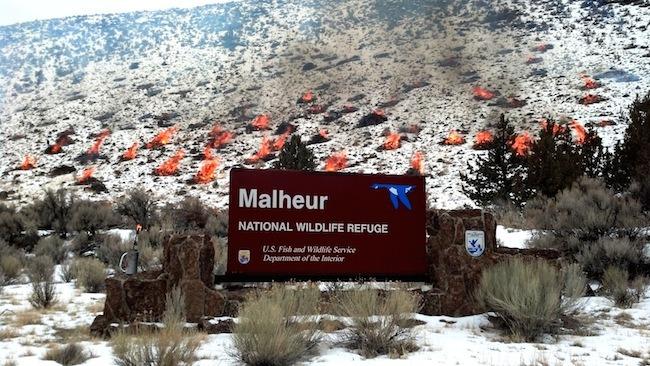

Last month a group of armed thugs kicked off the New Year by invading the Malheur National Wildlife Refuge in Harney County, Oregon. To many observers, the whole episode has been a bit of a head-scratcher. The out-of-state group claimed they had come to "educate" the local community about their rights, prevent two local ranchers from going to jail for arson, and turn the public preserve over to ranchers, loggers and miners. But as it turned out, pretty much nobody in the local community wanted them around -- not even the two jail-bound fellows.
Well, scratch your head no more. When the Malheur takeover first came up, TriplePundit was among those who detected the long, sticky fingers of the Koch-funded lobbying organization ALEC at work, and now it appears that the smoking gun has emerged.
ALEC and the Koch brothers pulling strings behind the Malheur takeover
Considering the practically zero level of local support for armed thuggery, the only way to make sense of the Malheur takeover is that it was a proxy action on behalf of ALEC, and by extension the Koch brothers, who happen to number ranching, mining and logging among their interests.
The leader of the Malheur takeover was Ammon Bundy, son of the now-notorious Nevada cattle rancher Cliven Bundy. The elder Bundy is known for his affinity for the ALEC "states' rights" lobbying effort, the idea being that federal agencies have no Constitutional authority to manage public land outside of Washington, D.C. The ultimate goal is to have states take control of federal property, easing the way for development, resource extraction and privatization.
For many years the elder Bundy has put the ALEC philosophy into action by refusing to pay fees for his cattle on federal grazing lands, gaining support from like-minded legislators including several in the current crop of Republican presidential candidates. When federal agents finally attempted to enforce legal action, he called on a network of armed thugs to drive them off (it's no secret that ALEC is also behind the liberalization of gun laws). That was two years ago and enforcement seems to be in a holding pattern.
Like his father, the younger Bundy also put the ALEC philosophy into action with the help of a weaponized group of volunteers, only he upped the ante by barricading his armed men inside a working federal facility.
As for the ALEC connection, of course that's a matter of inference and interpretation -- or it was until now. The Salt Lake Tribune has a scoop that ties up the Bundy-ALEC-Koch connection in one tidy package.
Bundy's video used by ALEC group, misspellings and all
Last week, Tribune staff columnist Paul Rolly discussed a video being peddled on Facebook by the ALEC-backed American Lands Council through its former president, Utah state Rep. Kenneth Ivory. The video purports to show reckless and irresponsible controlled burning practices by the federal Bureau of Land Management.
That's significant because, as noted above, Ammon Bundy's initial excuse for invading the refuge was to support two local ranchers. Last fall the two men were re-sentenced on arson charges related to burning brush, and their supporters argue that federal agencies behave far worse when it comes to fire management.
This week, Rolly followed up by asserting that the American Lands Council post was based on a video produced by Ammon Bundy himself in support of the two jail-bound ranchers. (We found two such Youtbue videos uploaded by Bundy: here on Dec. 5 and here on Dec. 31.)
Bundy's videos rely on footage shot by a local rancher who was making the exact opposite point about federal burn practices. Rolly explains:
"The [American Lands Council] video was misleading, since news stories and subsequent BLM reports of the 2012 blaze show it was lightning-caused, fueled by heavy dry underbrush and desperately fought by federal, state and area firefighters."Here's the rest of the story: It was a rip-off of a heavily edited propaganda video produced in December by Ammon Bundy."
[snip]
"Research by Michael Heggen, a Salem, Ore., horse breeder, discloses that an original video was shot by an area rancher named John Witzel, who was armchair-quarterbacking the BLM's battle against the blaze. While Witzel criticized the agency for not acting quickly enough, he didn't accuse the BLM of "burning out ranchers" — as claimed in Bundy's edited version.
"'What you see in the video,' Heggen writes, 'are firefighting efforts — including the use of backfiring, which involves intentionally burning land ahead of a wildfire in order to create a black line devoid of fuel for the wildfire — not thuggery by the yellow-clad stormtroopers of the tyrannical BLM.'"
So, there's that.
The Malheur mess drags on...
As of this writing, only four lone holdouts are still barricaded inside the refuge, despite repeated pleas from Ammon Bundy to give themselves up. Bundy himself is in jail facing a raft of federal charges, along with more than a dozen of his cohorts, having provided prosecutors with ample evidence of their crimes through their own social media as well as the mainstream press. He and most of the others are considered flight risks and have been denied bail, at least until the refuge is cleared.
Earlier this week Bundy issued a somewhat pathetic video plea from jail for "any elected representative" from eight Western states to come and visit or speak out in support of the group. But so far the only out-of-stater planning to stop by is Nevada state Rep. (and gun enthusiast) Michele Fiore. Fiore, though, has made it clear that her visit was planned before Bundy released his plea.
So, why the radio silence?
TriplePundit has followed the whole Malheur mess from the beginning, and one of the first things we noted was that under Bundy's blundering leadership, the Malheur "occupation" was disavowed by other affiliates and sympathizers of the so-called armed "patriot" network in addition to alienating every local stakeholder group.
Bundy has also been abandoned by the same elected officials who once supported his father, with Fiore being one of the few outliers. In this context, Ivory's Facebook video appears to be designed to leverage Bundy in support of the broader goal of federal land privatization.
We're thinking that nobody else has come forward because Bundy's ham-handed land grab stirred up a hornet's nest, shining an unwanted spotlight on the legislators supported by ALEC and the Koch brothers to advance the privatization cause.
On the other hand, Bundy's criminal actions seem to have galvanized conservationists. Hundreds of volunteers signed up to come and clean up the mess at the Malheur refuge once the coast is clear, and hundreds of others have pledged financial assistance through the G.O.H.O.M.E. campaign.
Image by Shane Theall via U.S Fish & Wildlife Service
Will Congress Consider the Climate Impacts of its New Energy Bill?
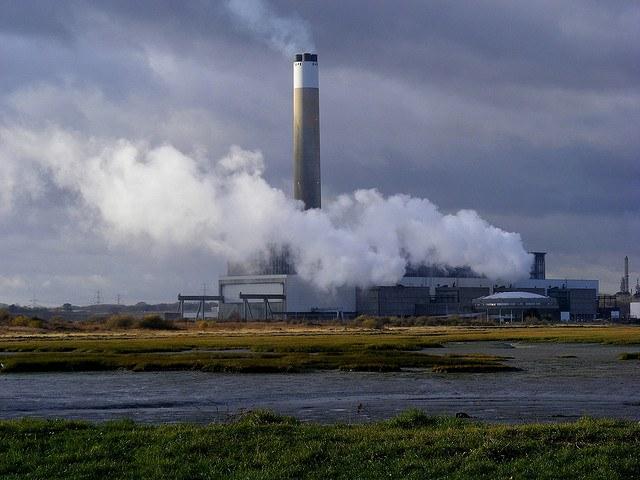

The U.S. Senate will soon vote on a bipartisan energy bill. If successful, it will be the first major energy bill to pass since George W. Bush was in office in 2007.
The bill includes climate-friendly amendments such as energy-efficiency measures. But it is over 400 pages and is bound to include measures that aren’t so climate friendly.
Congress is required to determine if a bill would add to the federal deficit prior to voting on it. The reason for that requirement is so that congressional members can figure out if they’re saddling the next generation with debt. However, there is no such provision when it comes to climate change.
As the Environmental Defense Fund (EDF) declared in a blog post last week: “Congress is about to vote on an energy bill without even bothering to check if it increases or decreases climate pollution.” And since fossil fuels account for the majority of carbon emissions, it is important to figure out the energy bill’s climate impact.
Sen. Dianne Feinstein (D-Calif.) would like to change that and introduced an amendment to the energy bill to require that its climate impact be evaluated.
The EDF praised the amendment: “Senator Feinstein's amendment is an important and responsible step forward,” Mark MacLeod, EDF's director of special projects, climate and air, told Triple Pundit. “Americans have a right to know if energy legislation is going to increase or decrease those emissions. Ideally, members of Congress would know the climate pollution impact of a bill before they vote on it."
Senate amendment acknowledges the deceit of fossil fuel companies
Sen. Feinstein’s amendment is not the only one that addresses climate change. Last week, Democratic Sens Sheldon Whitehouse (R.I.), Ed Markey (Mass.) and Brian Schatz (Hawaii) introduced a strongly-worded amendment expressing disapproval that fossil fuel companies funded climate-science denial. “It is the sense of the Senate that ... fossil fuel companies have long known about the harmful climate effects of their products,” the amendment states.Fossil fuel companies “used a sophisticated and deceitful campaign that included funding think tanks to deny, counter, and obstruct peer-reviewed research; and used that misinformation campaign to mislead the public and cast doubt in order to protect their financial interest."
The end of the amendment alludes to the investigations by the California and New York attorneys general into ExxonMobil. It urges fossil fuel companies to “cooperate with active or future investigations into their climate-change related activities and what the companies knew and when they knew it.”
Last month, California Attorney General Kamala D. Harris launched an investigation to determine if ExxonMobil failed to report climate-change risks to shareholders and lied to the public about those risks. In November, New York Attorney General Eric Schneiderman launched his own investigation to determine if ExxonMobil lied to the public or investors about climate change risks, with a focus on statements the company made to investors.
Despite the investigations, last week ExxonMobil stated in a letter that it wants a shareholder resolution related to climate risk eliminated. The resolution calls on the oil and gas giant to adopt a policy that acknowledges the “imperative” to limit global temperature rise to 2 degrees Celsius. Clearly, the company is still trying to keep investors in the dark about climate change.
In December, world leaders met in Paris and agreed on a successor to the Kyoto Protocol. The world simply can’t afford energy bills by the wealthiest countries that fail to consider climate change. Neither can it afford fossil fuel companies that refuse to own up to their deceit of investors and the public about climate risks and continued efforts to keep them in the dark about those risks.
Image credit: Flickr/Gillian Thomas
Mars Promises to End the Use of Artificial Food Colorings


Do you like to fill your living room candy jar with different colored M&Ms based on the time of year? Well, brace yourself, because the candy that melts in your mouth, not in your hands, is about to undergo a “natural” makeover.
This week, Mars announced that all of its food products will be free of artificial colors within five years. Chocolate, gum, candy, beverages and, yes, anything fit for human consumption will no longer have any artificial coloring whatsoever by early 2021.
According to the company, Mars is phasing-in this change as “part of a commitment to meet evolving consumer preferences.” The company insists that health concerns were not behind this shift. Nevertheless that must have crossed the minds of many within Mars' headquarters, even though the science behind artificial colors and human health is inconclusive depending on which source you check. The medical community says research does not paint a clear picture; other organizations say food dyes have the potential to wreak havoc on human health.
Mars claims that most of its food products are free of artificial colors already, and a cursory check of its brand portfolio backs up the company’s statement. (Although, we must ask, how do they get the coconut in those Bounty chocolate bars so brilliantly white?) Of course, the total amount of artificial colors used in Starburst and Skittles candy alone could probably turn all of the Great Lakes into one giant happy rainbow.
Concern over food dyes in Mars’ products has not had an impact on the company’s sales here in North America or in Europe, where regulators tend to be far stricter than their American cousins. Nevertheless, the shifts in consumer demand are real, and the company is wise to get ahead on this front.
So far, Mars has been mum on how it is going to extract artificial coloring out of its complex supply chain. The company also has not said what kind of natural food dyes it will use. The latter presents a huge challenge: After all, Christmas or Valentine’s Day without red M&M’s would be like Easter without pastel-colored goodies. As for those adorable red candies, the company could consider carmine dye, but that coloring is derived from cochineal insects, which would enrage the vegan community. Campari stopped using that dye in its timeless aperitif after almost 150 years. Starbucks did the same a few years ago after many consumers complained.
Questions over what natural dyes, if any, will be used in its food products aside, Mars is building on its track record of changing its business practices to fit in with the times. The $33 billion food giant has also hedged its bets on clean energy; reduced its overall water consumption; and transitioned to sourcing only sustainable palm oil for its food products.
Image credit: Wiki Commons (Evan-Amos)